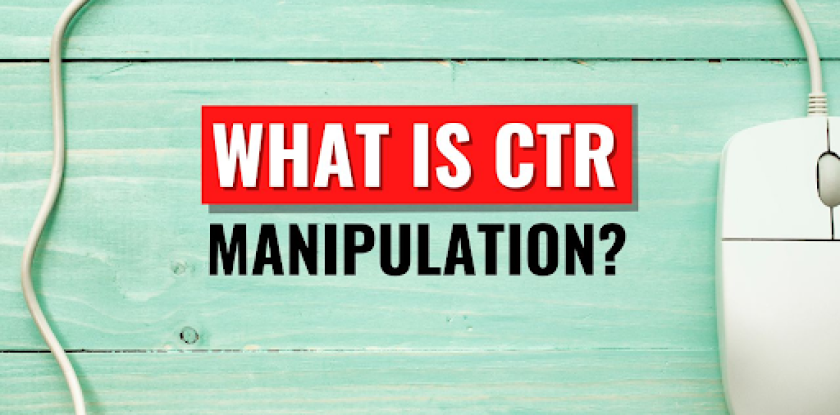LinkDaddy CTR Manipulation: Transform Your Online Approach Today!
Just How to Measure the Effect of CTR Manipulation on Your Advertising
Comprehending the nuances of click-through rate (CTR) manipulation in advertising and marketing is essential for services aiming for genuine individual engagement. By analyzing key metrics such as conversion rates and bounce rates, online marketers can uncover possible disparities that may develop from fabricated improvements.
Understanding CTR Adjustment
Comprehending CTR manipulation is important for online marketers seeking to optimize their campaigns and make sure information honesty. Click-through price (CTR) describes the ratio of users who click a certain web link to the overall number of users that check out the ad or material. Control of this metric can take place through various means, including using deceptive advertising and marketing strategies, click ranches, or automated robots. These practices can artificially blow up CTR numbers, resulting in misdirected advertising and marketing approaches and misallocation of resources.
The ramifications of CTR adjustment prolong past simple data distortion; they can threaten rely on electronic advertising and marketing. When businesses depend on filled with air metrics, they may buy inefficient projects, ultimately hurting their return on investment. Additionally, platforms may punish advertisers taking part in such methods, leading to additional ramifications for their advertising efforts.
To successfully deal with CTR manipulation, marketing professionals have to create a comprehensive understanding of their data resources and analytics devices. By utilizing advanced monitoring approaches and inspecting website traffic sources, they can make sure and recognize uneven patterns that their efficiency metrics show genuine customer involvement - GMB CTR Manipulation. This vigilance is important for fostering lasting success in a significantly competitive electronic landscape
Key Metrics to Analyze
Effective evaluation of key metrics is crucial for assessing the real performance of advertising and marketing campaigns and detecting prospective CTR adjustment. One key metric to take into consideration is the Click-Through Price (CTR) itself, which represents the ratio of users who click an ad to the total variety of users who watch it. A sudden spike in CTR may indicate manipulation, requiring further investigation.
Furthermore, checking conversion prices is vital. A high CTR with a reduced conversion rate might signify that the clicks are not genuine or that the targeting is misaligned (LinkDaddy CTR Manipulation). Examining bounce prices can offer understanding into user engagement; a high bounce rate after a click may suggest that the web traffic is not quality-driven.

Tools for Dimension

Furthermore, A/B testing tools such as Optimizely or VWO can help with trial and error with different ad versions to establish which components drive higher CTR. These tools allow marketing experts to examine real-time efficiency and make data-driven changes. Social media site analytics devices, like Hootsuite or Sprout Social, can additionally contribute in understanding CTR within social systems, offering insights into target market behavior and engagement fads.
In addition, heat mapping devices, such as Hotjar, can reveal exactly how users communicate with ads, aiding to determine where enhancements can be made. Incorporating these devices develops a robust dimension framework, allowing online marketers to determine the effects of CTR control successfully. Ultimately, the right option of measurement devices is critical for making notified advertising and marketing choices and maximizing project performance.

Reviewing Long-lasting Results
One have to consider the lasting impacts of CTR adjustment on overall marketing efficiency, as short-term gains can often mask deeper effects. Gradually, unnaturally inflated click-through prices may cause like this diminished count on from consumers and online search engine alike. When users consistently run into deceptive methods, they might become hesitant to involve with the brand, leading to lower conversion rates in the future.
Additionally, formula updates from platforms such as Google are designed to focus on real interaction over filled with air metrics. As a result, organizations that count on CTR adjustment may locate themselves punished, resulting in a decline in natural reach and visibility. This can have a cascading effect on brand trustworthiness and client loyalty, eventually weakening the very goals that the preliminary control looked for to accomplish.
Moreover, the data gathered from controlled CTR might mislead marketers in their technique growth. Relying upon skewed information can cause illinformed projects that fall short to resonate with the target audience, resulting in thrown away resources and missed out on chances. It is important for online marketers to examine the long-lasting implications of CTR control and prioritize lasting, honest interaction techniques for lasting success.
Moral Considerations in CTR Adjustment
In the realm of electronic marketing, ethical considerations surrounding CTR manipulation are vital. While the desire to enhance click-through prices (CTR) can lead to short-term gains, the possible long-term consequences on brand integrity and customer trust can not be neglected. Controling CTR frequently includes techniques that might misdirect individuals, such as clickbait headlines or misleading advertising methods. These approaches can result in a short-term rise in traffic but might inevitably deteriorate consumer confidence.
Furthermore, honest worries encompass compliance with regulations such as the Federal Profession Compensation (FTC) guidelines, which mandate transparency in advertising and marketing. Falling short to comply with these criteria can expose services to lawful implications and harm their track record. Marketing experts have to consider the effects of their methods on individual experience and the broader sector landscape.
Additionally, the surge of expert system and automation in advertising offers further ethical issues. The possibility for mathematical bias or the exploitation of customer data increases inquiries concerning accountability and fairness. Inevitably, ethical advertising and marketing methods must focus on openness, sincerity, and respect for the customer, promoting long-lasting connections that go beyond simple metrics like CTR. Stabilizing performance with values is vital for sustainable success in the digital market.
Final Thought
In final thought, determining the impact of CTR control official site on marketing calls for a thorough analysis of key metrics, including click-through prices, conversion rates, and bounce prices. Making use of analytics devices and conducting A/B screening can provide important understandings right into individual engagement and website traffic top quality. Evaluating long-term impacts and sticking to honest factors to consider is necessary for educated decision-making. Inevitably, a data-driven strategy guarantees that advertising and marketing techniques are effective and straightened with real individual interactions.
Recognizing the subtleties of click-through rate (CTR) adjustment in advertising is essential for services striving for genuine user involvement.Efficient analysis of essential metrics is important for assessing the true efficiency of advertising and marketing projects and spotting possible CTR adjustment.One should go to my blog consider the lasting effects of CTR control on general marketing performance, as short-term gains can often mask much deeper ramifications.In the realm of electronic marketing, ethical considerations surrounding CTR control are critical.In final thought, gauging the effect of CTR adjustment on marketing needs a thorough analysis of key metrics, including click-through rates, conversion rates, and bounce rates.